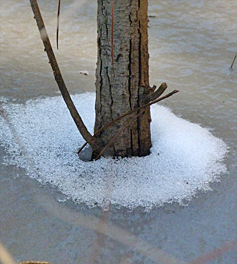
Weather systems often bring in unusual birds. Strong cold fronts sometimes carry with them birds from the far north. Unusually cold weather creates strong needs within birds to feed, simple survival is the name of the game. During extreme cold periods you often see birds at your feeders that are absent during mild weather especially when the leaf litter is covered with snow.
On Thursday, a day when upon awaking from a three dog night, the air temperature was a frigid 3.1 degrees, I wondered what the wildlife was up to on such a chilled morn. After due consideration as to whether or not my van would start and whether water would come out of my faucet, I wondered what the coming day would bring (the van started but the well refused to flow).
Would I see a Snowy Owl, would Fox Sparrows come out of the woods and in to the feeders, would there be siskins everywhere I looked? No, I would see none of those things. I did, however, spot a Green Heron in the Wetlands here at the Museum.
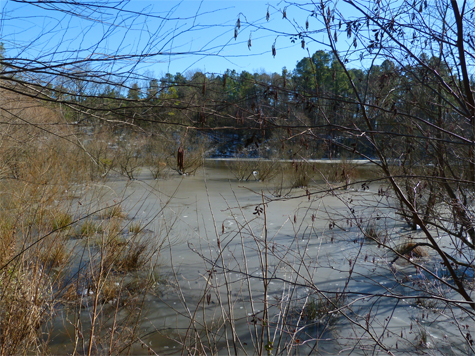
Green Herons are common in these parts during the warmer months, from around April to October. They are very rare in winter here in North Carolina, although a few are seen most winters. Those sightings are mainly on the coast. I was surprised, and a little troubled, when I saw one fly into a shrub on the north side of the Wetlands Thursday (1/27). The past few weeks have been unusually cold, the water was frozen, and this bird no doubt needed food. There are very few insects for a Green Heron to catch with such cold temps, and fish, tadpoles, and frogs are hard to get at under ice.
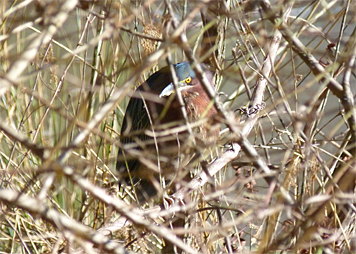
Throughout the day I saw the heron in different locations in the Wetlands. There were a few small openings in the ice along the shoreline, one of which is next to a pipe where tadpoles congregate. The pipe is just three feet off the main path. Each time the heron moved towards this tiny bit of open water something would come by to scare it away. I remember thinking at the end of the day that the heron would now have the tadpoles all to itself.
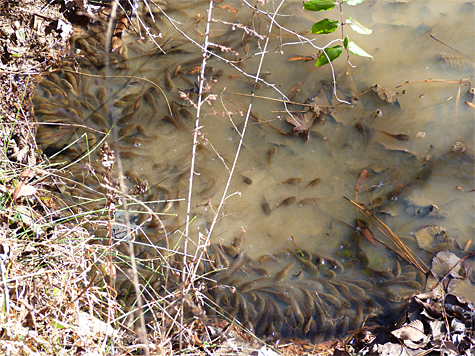

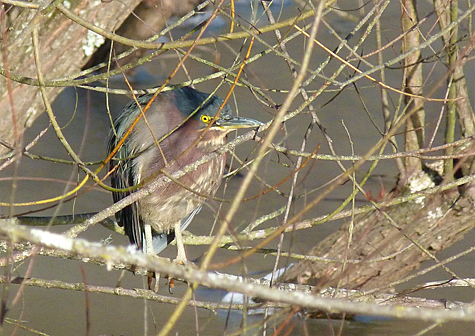
The heron seemed desperate. The bird appeared slow in its movements. I couldn’t help but think that if this bird didn’t catch some of those tadpoles this very night, it wouldn’t survived. Although the next few days were forecast to be in the forties and fifties, the coming night would be in the teens.
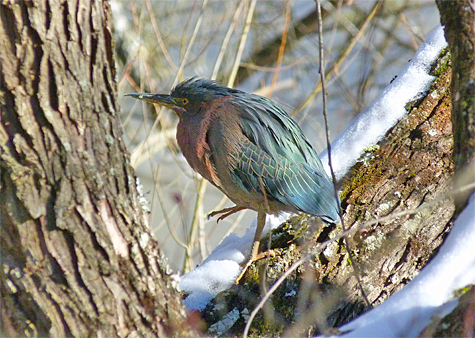
The following day (Friday, 1/28/14) I looked for the bird but couldn’t locate it. I didn’t notice any areas where there may have been a struggle, no feathers or tracks to indicate a predator had gotten the heron. So with that in mind, I’m going to assume that the bird caught a sufficient amount of tadpoles to fuel it through the night and has since left for the coast. I like happy endings, don’t you?
It didn’t take long for a few mergansers to return to the Wetlands. On Friday, with intense sunshine and temperatures reaching the mid thirties, the Wetlands began to thaw creating small pockets of open water. Two Hooded Mergansers dropped in to partake in some fishing around the base of the Black Willows that dominate the north side of the Wetlands.
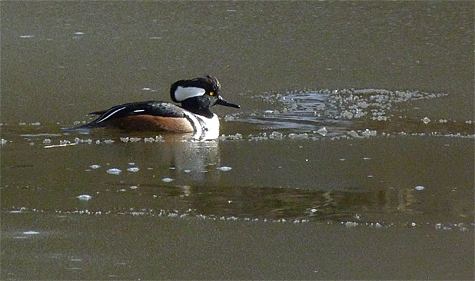
The next few days (Saturday and Sunday) the temperatures reached the fifties and sixties.
Where did the Mergansers go when the Wetland froze?
Obviously there’s no real way to know where our mergansers went during the freeze but there are numerous small ponds in the area. A small, local pond with heavy waterfowl activity would be one guess, the action of the waterfowl swimming around on the pond keeps the water moving and as a result, open.
Another alternative would be Falls Lake which is too deep to freeze over. And, there’s always the Eno River.
Good question, thanks.